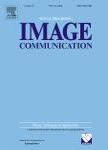版权所有:内蒙古大学图书馆 技术提供:维普资讯• 智图
内蒙古自治区呼和浩特市赛罕区大学西街235号 邮编: 010021

作者机构:Anyang Normal Univ Sch Comp & Informat Engn Anyang 455000 Henan Peoples R China Minist Educ Key Lab Oracle Bone Inscript Informat Proc Anyang 455000 Henan Peoples R China Tianjin Univ Coll Intelligence & Comp Tianjin 300350 Peoples R China
出 版 物:《SIGNAL PROCESSING-IMAGE COMMUNICATION》 (Signal Process Image Commun)
年 卷 期:2025年第138卷
核心收录:
基 金:Henan Province Science and Technology Research Project Chinese Civilization Inheritance and Development Program [G1806, G1807, G2821]
主 题:Oracle Bone Inscriptions Unsupervised Domain Adaptation Object detection Information disentanglement
摘 要:The detection of Oracle Bone Inscriptions (OBIs) is the foundation of studying the OBIs via computer technology. Oracle bone inscription data includes rubbings, handwriting, and photos. Currently, most detection methods primarily focus on rubbings and rely on large-scale annotated datasets. However, it is necessary to detect oracle bone inscriptions on both handwriting and photo domains in practical applications. Additionally, annotating handwriting and photos is time-consuming and requires expert knowledge. An effective solution is to directly transfer the knowledge learned from the existing public dataset to the unlabeled target domain. However, the domain shift between domains heavily degrades the performance of this solution. To alleviate this problem and based on the characteristics of different domains of oracle bone, in this paper, we propose an information disentanglement method for the Unsupervised Domain Adaptive (UDA) OBIs detection to improve the detection performance of OBIs in both handwriting and photos. Specifically, we construct an image content encoder and a style encoder module to decouple the oracle bone image information. Then, a reconstruction decoder is constructed to reconstruct the source domain image guided by the target domain image information to reduce the shift between domains. To demonstrate the effectiveness of our method, we constructed an OBI detection benchmark that contains three domains: rubbing, handwriting, and photo. Extensive experiments verified the effectiveness and generality of our method on domain adaptive OBIs detection. Compared to other state-of-the-art UDAOD methods, our approach achieves an improvement of 0.5% and 0.6% in mAP for handwriting and photos, respectively.